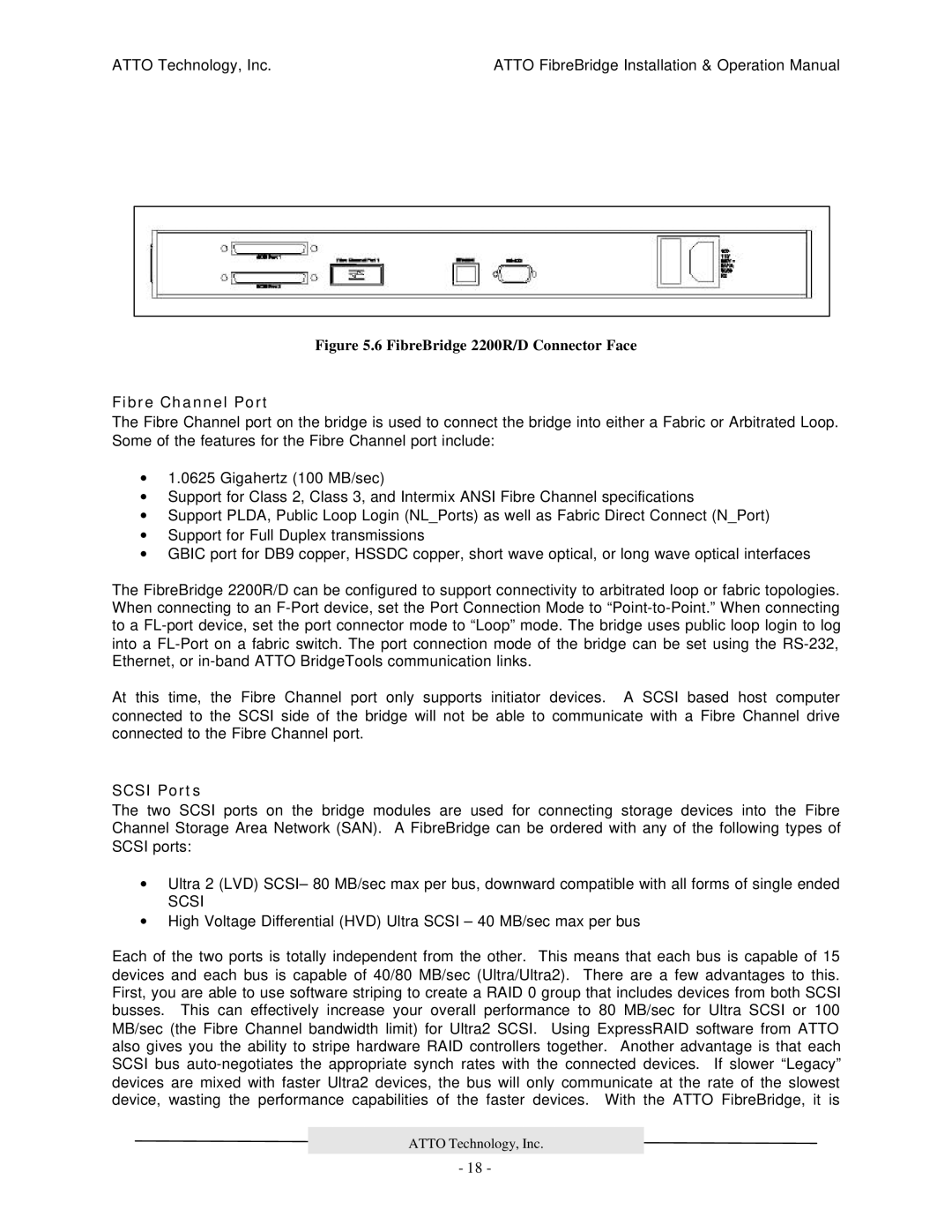
ATTO Technology, Inc. | ATTO FibreBridge Installation & Operation Manual |
Figure 5.6 FibreBridge 2200R/D Connector Face
Fibre Channel Port
The Fibre Channel port on the bridge is used to connect the bridge into either a Fabric or Arbitrated Loop. Some of the features for the Fibre Channel port include:
∙1.0625 Gigahertz (100 MB/sec)
∙Support for Class 2, Class 3, and Intermix ANSI Fibre Channel specifications
∙Support PLDA, Public Loop Login (NL_Ports) as well as Fabric Direct Connect (N_Port)
∙Support for Full Duplex transmissions
∙GBIC port for DB9 copper, HSSDC copper, short wave optical, or long wave optical interfaces
The FibreBridge 2200R/D can be configured to support connectivity to arbitrated loop or fabric topologies. When connecting to an
At this time, the Fibre Channel port only supports initiator devices. A SCSI based host computer connected to the SCSI side of the bridge will not be able to communicate with a Fibre Channel drive connected to the Fibre Channel port.
SCSI Ports
The two SCSI ports on the bridge modules are used for connecting storage devices into the Fibre Channel Storage Area Network (SAN). A FibreBridge can be ordered with any of the following types of SCSI ports:
∙Ultra 2 (LVD) SCSI– 80 MB/sec max per bus, downward compatible with all forms of single ended
SCSI
∙High Voltage Differential (HVD) Ultra SCSI – 40 MB/sec max per bus
Each of the two ports is totally independent from the other. This means that each bus is capable of 15 devices and each bus is capable of 40/80 MB/sec (Ultra/Ultra2). There are a few advantages to this. First, you are able to use software striping to create a RAID 0 group that includes devices from both SCSI busses. This can effectively increase your overall performance to 80 MB/sec for Ultra SCSI or 100 MB/sec (the Fibre Channel bandwidth limit) for Ultra2 SCSI. Using ExpressRAID software from ATTO also gives you the ability to stripe hardware RAID controllers together. Another advantage is that each SCSI bus
ATTO Technology, Inc.
- 18 -
